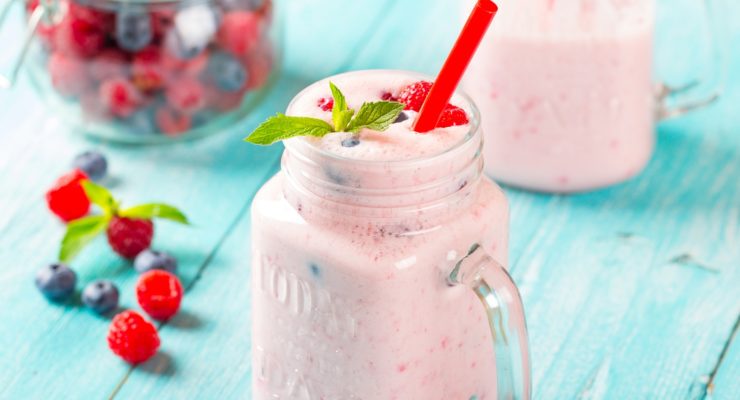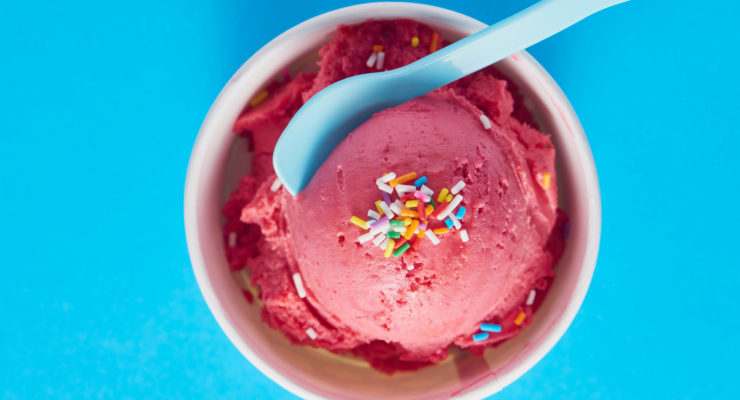It’s hot! Which means it’s easier than ever to get dehydrated. That can have consequences for your health and for your enjoyment of summer activities—exercising while dehydrated can result in dizziness and cramps, so it’s important to load up on hydrating foods. It can also effect your performance while you move: According to Human Kinetics, if you’re dehydrated as little as five percent, your workout’s “power output” can be reduced by 30 percent.
Staying hydrated can mean not just that your active summer activities are more fun, but also that your weight loss plan is more effective. One study published in the The Journal of Clinical Endocrinology &Metabolism found that when dieters drank two liters of water per day, they burned 400 extra calories each day—even if they didn’t change anything else. For men in the same study, those extra calories were specifically burned from belly fat.
You don’t have to actually drink a full two-liter to stay hydrated, though: You can get the water your body needs to function properly through hydrating foods. And, according to Science Daily, it can help you eat more while you lose: Scientists found that when people ate water-rich foods, they ate fewer calories without reducing the overall sizes of their meals.
Here are 11 hydrating foods for warm weather activities:
1. Strawberries

Water content: 90%
One 50-calorie cup of strawberries can help lower your cholesterol and reduce your risk for diseases including cancer, heart disease, and diabetes. They also raise your risk of having a totally delicious summer. Try blitzing them into this Strawberry Mint Smoothie >, mixing them into Strawberry Popsicles >, or using them to top a refreshing Summer Salad >
2. Pineapple

Water content: 86%
Pineapple’s sweetness is suprisingly low-calorie: One cup has just 82 calories. But those 82 deliver 100 percent of your daily Vitamin C, as well as bromelain, an enzyme that can help you digest your meals more easily. Enjoy fresh rings or chunks, or for a sweet, refreshing treat that’s like a time-traveling trip back to childhood, try this simple, two-ingredient Pineapple Whip recipe >
3. Cucumbers

Water content: 95%
Cucumbers are one of the lowest-calorie foods you can find—clocking in at just 8 calories per cup. But low-calorie does not mean they’re low on flavor: Cukes are the ultimate way to deliver a refreshing, hydrating flavor to your barbecue guests. Whether it’s mixed into this Zesty Cucumber and Dill Salad >, whipped into this Greek-inspired 5-ingredient Cucumber Dill Dip >, or as the surprising base for a cucumber cup appetizer, you’ll be keeping your guests—and yourself—hydrated, full and satisfied.
4. Skim Milk

Water content: 91%
When it’s skim, it’s almost all water. For non-dieting milk lovers, that can be a turnoff. But in the heat of summer, it makes skim a great, hydrating way to enjoy 9 grams of protein per cup when making a refreshing, cool-down smoothie— like this frothy, icy Lemon Cooler shake >. It’s summer perfection!
5. Zucchini

Water content: 94%
If you’re already a “zoodle” lover, this one’s a slam dunk. But for the uninitiated, here’s a crash course: By using a spiralizer, you can turn zucchini into “noodles” that freshen up vegetable dishes with a pasta-like eating experience that you’ll love. The great news for summer: Zoodles don’t have to be cooked! In a recipe like these Vegetarian Meatballs with Zucchini Noodles >, you can let the sauce warm up the raw zoodles to get the most hydration from the veggies with the least amount of labor—perfect for a quick summer dinner.
6. Oranges

Water content: 87%
There’s a reason these slices are on the sideline of every soccer game at the half: Oranges keep are a top pick for hydrating foods! But they also bring other nutrients along—like potassium, one of the electrolytes that’s lost when you sweat. So have your own slices on hand, or go for a more grown-up taste this summer: This 101-calorie Orange Carrot Ginger Smoothie > is a sweet, vitamin-rich, and refreshing glass that’s perfect for breakfast or for a late day snack on any hot day.
7. Celery

Water content: 95%
Here’s another potassium powerhouse: One cup of chopped celery has the same amount of the heart-healthy nutrient that you’d get from half a banana—but for just 14 tiny calories. But those little cals help beef up your favorite cool summer salads, from pasta dishes to chicken salad. Here’s a new favorite: Chop some celery to combine with another water-rich summer staple—watermelon—for this surprising, sweet and protein-packed Watermelon Chicken Salad > Sounds weird, tastes amazing!
8. Tomatoes

Water content: 94%
Lycopene, a powerful antioxidant in tomatoes, may help lower your risk of stroke and certain cancers, according to Science Daily. And the redder your tomatoes are, the more lycopene they have—meaning summer is the healthiest time to eat ‘em. One surprising way to change up your tomato game: Add asparagus to the traditional Caprese Salad > for a fresh taste that feels luxurious—and adds a satisfying crunch to this staple summer side.
9. Edamame

Water content: 72%
This one’s surprising: With such a meaty texture, edamame doesn’t seem watery. But it’s got that hydration, and much more: like 18.46 grams of belly-filling, muscle-building protein per cup, and more potassium than you’ll get from two whole bananas. That’s good news in the heat, since eating more potassium can help reduce blood pressure risk, as well as your risk of stroke, according to the National Federation of Professional Trainers.
10. Carrots

Water content: 88%
Spending a few minutes turning a bag of raw carrots into pre-portioned, snack-ready containers or bags won’t just give you a low-calorie, high-fiber, water-rich source of food for when you get peckish. The act of cutting those carrots may also help you eat healthier overall: Those were the findings of one study, where more time spend on food prep was associated with healthier eating habits—and, as a bonus, with saving money on food. So you’ll be hydrated, feel full, and have fat where you want it—in your wallet.
11. Blueberries

Water content: 84%
What says summer like a cup of sweet, ripe blueberries (one of our favorite hydrating foods)? And they’re not just super good, but a superfood: Blueberries reduce the risk of heart attack in women by 33 percent, improve your memory, and can help widen your arteries so blood flows smoother. Have them fresh, or enjoy your blues in the smoothest way possible: As part of this super-simple, 5-ingredient homemade Blueberry Lemon Ice Cream Sundae >
*All water content percentages taken from the United States Department of Agriculture (USDA).
The post 11 Hydrating Foods for Warm Weather Activities appeared first on The Leaf.




Comments
Post a Comment